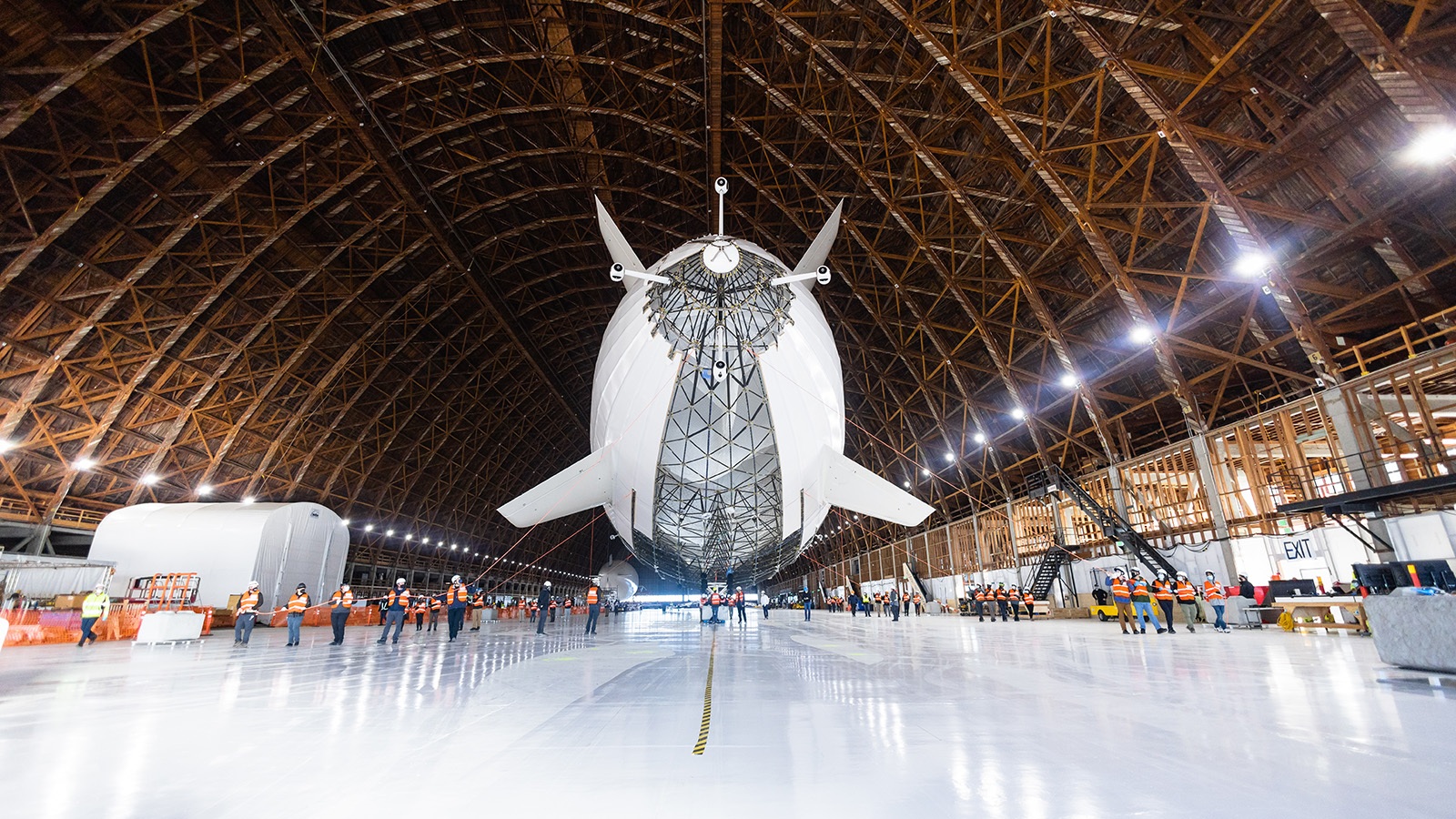Stay Up to Date
Submit your email address to receive the latest industry and Aerospace America news.
The Lighter-Than-Air Systems Technical Committee stimulates development of knowledge related to airships and aerostats for use in a host of applications from transportation to surveillance.
Google co-founder Sergey Brin’s LTA Research announced in May that it was starting construction of its second zeppelin, Pathfinder 3, in Akron, Ohio’s, iconic Airdock — the same hangar where Goodyear built the U.S. Navy’s rigid airships of the 1930s. So big is the Airdock that it could accommodate six U.S. football fields, or a 300-meter-long airship. LTA Research bought it this year to be the construction site for future, larger zeppelins.
Company CEO Alan Weston told reporters that the 180-meter Pathfinder 3 — a third larger than its predecessor, Pathfinder 1 — could be ready for flight as early as 2023. In May, prototype carbon fiber and titanium framing already laid on the hangar floor in a patented assembly cradle. The finished zeppelin is to measure 185 meters long by 30 meters in diameter, with a lift of 96 metric tons and a range of 16,000 kilometers. Power for the all-electric craft will come originally from batteries, later from hydrogen fuel cells.
Meanwhile, in Sunnyvale, California, LTA’s 120-meter-long Pathfinder 1 was inflated with helium and began in-hangar tests in preparation for its first flight, planned to occur before year’s end. After flight testing in the Bay Area, it will relocate to Akron. The craft has a lift of 28 metric tons and a range of 4,500 kilometers, using a hybrid-electric power plant, batteries and solar cells to drive 12 electric motors. Some components — the gondola, nose cone and landing gear, for example — were fabricated in collaboration with Germany’s Zeppelin Luftschifftechnik, which last year derived half its sales from work done for LTA Research.
Both craft are designed to deliver humanitarian aid to remote disaster sites.
In June, Hybrid Air Vehicles, HAV, of the U.K. announced it had gained a launch customer for its Airlander 10. Spanish regional airline Air Nostrum reserved 10 aircraft, each configured to carry 100 passengers and operate on short-haul routes between European cities. The production version of Airlander 10, which is yet to be manufactured, has a 10-metric ton payload and a 7,400-kilometer range. Air Nostrum said it chose the craft both for its ability to land on water, making service to cities with ports rather than airports possible, and for its small carbon footprint. In its initial configuration that will be powered by four diesel engines, Airlander should produce 75% less CO2 than a conventional aircraft. An article in the June issue of Proceedings, journal of the U.S. Naval Institute, concluded that Airlander 10 has potential as a minelayer or minesweeper.
In July at the Farnborough International Airshow, HAV announced that contractor Collins Aerospace had manufactured the first prototype of the 500-kilowatt electric motors that would drive a future Airlander 10 design. HAV plans by 2026 to swap out two diesel motors in the original Airlander design for two electrics, and then, by 2030, switch to four electrics, with hydrogen fuel cells as the power source. The all-electric configuration would be completely emissions-free. HAV also announced a partnership program for Airlander 50, a future cargo version able to carry a 50-metric-ton payload. The program invites potential customers to have a say in designing the craft.
In January, HAV announced it would establish an Airlander 10 manufacturing facility in South Yorkshire. Plans call for producing 12 Airlander 10s per year starting in 2025.
In September, Lyons Press published “Hidden Hindenburg,” in which author Michael McCarthy argues that Zeppelin company patriarch Hugo Eckener covered up the Zeppelin company’s use of slave labor to build the Nazis’ V-2 rocket and that a flaw in the design of the Hindenburg’s outer cover was responsible for the airship’s fiery demise in 1937.
Stay Up to Date
Submit your email address to receive the latest industry and Aerospace America news.




